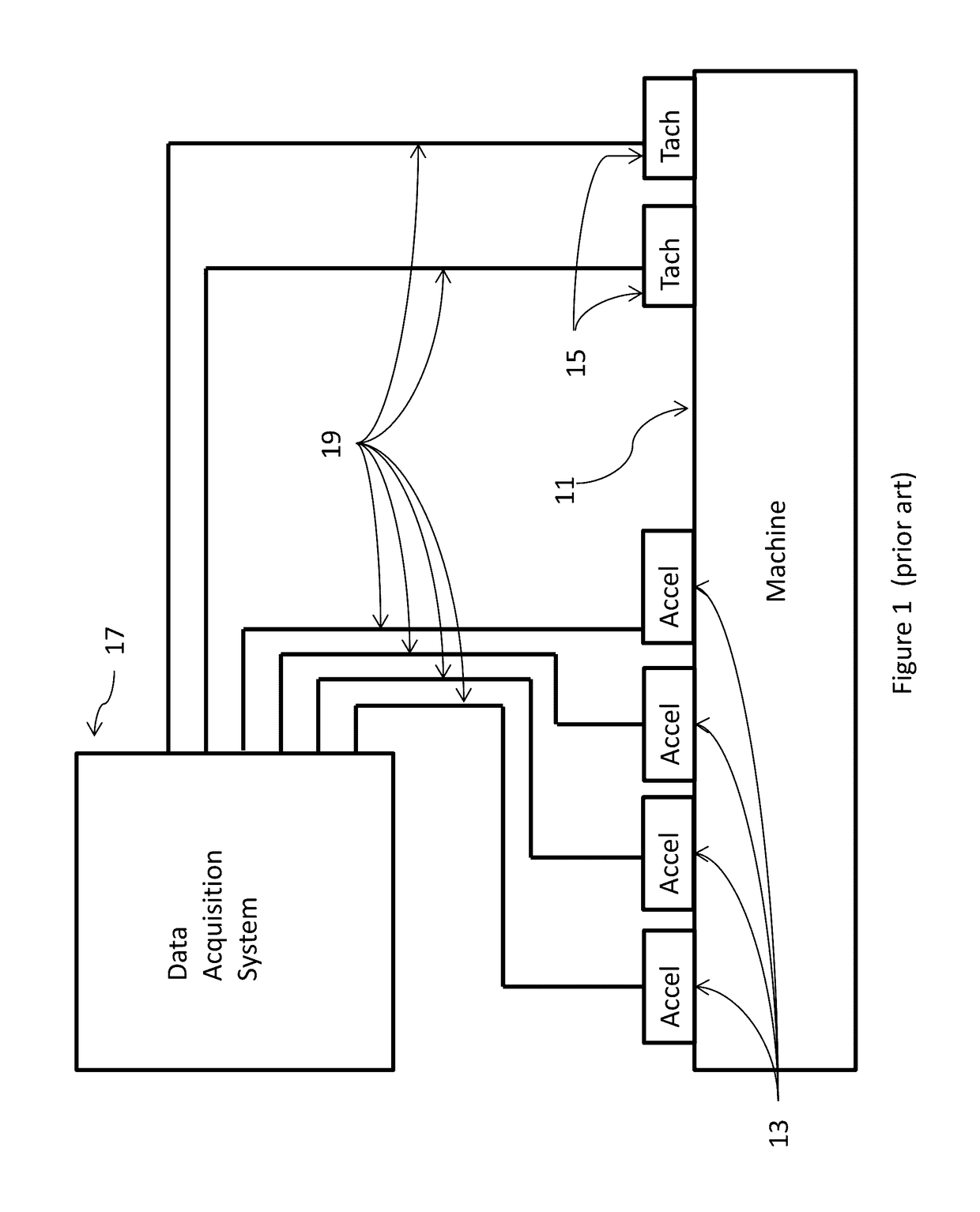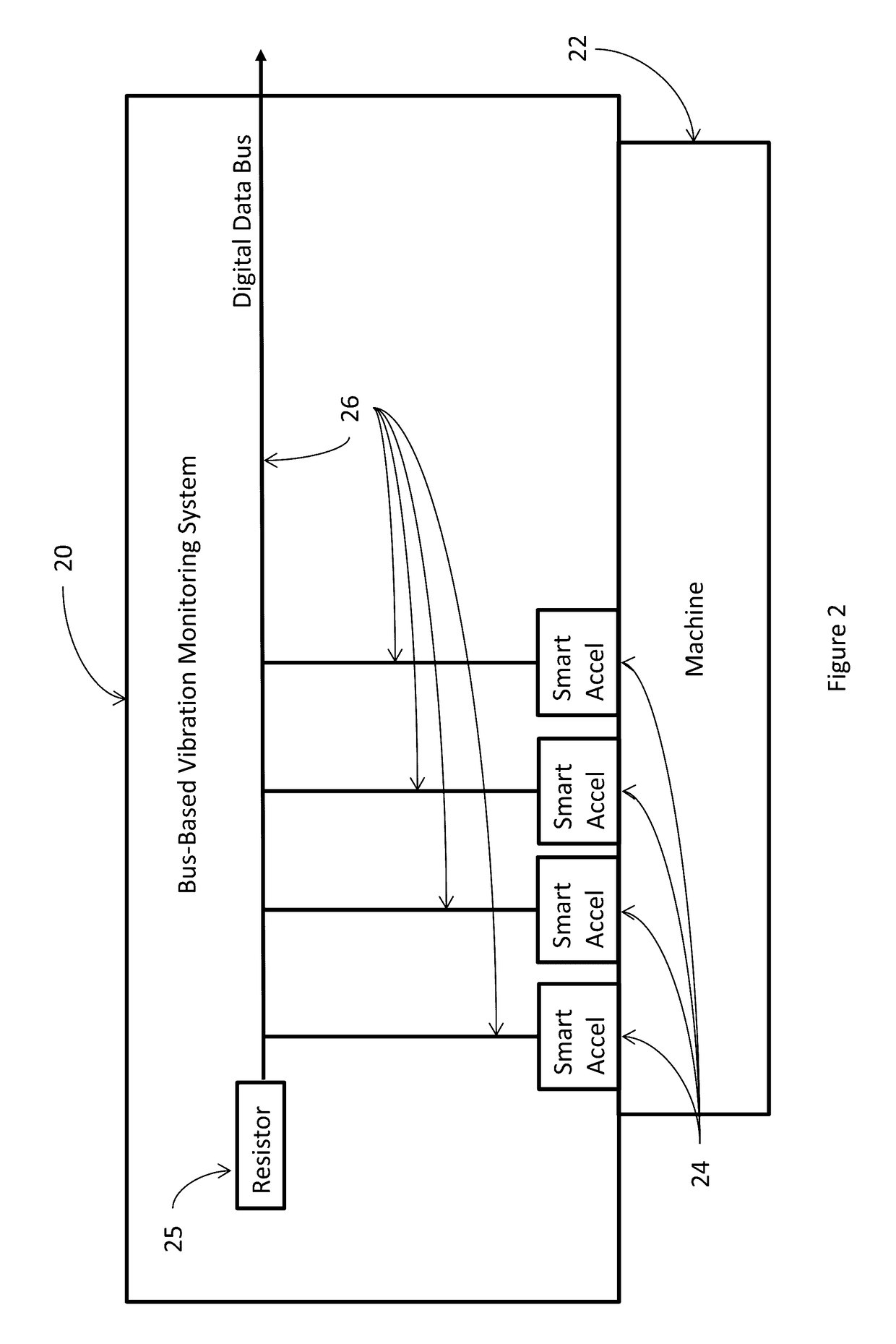Control Area Network Machine Diagostic
a control area and network machine technology, applied in the field of rotating machinery, can solve the problems of failure or inefficiency of rotating machinery operation, limited capacity, and device inability to continuously measure the vibration of all connected sensors, and achieve the effect of high degree of accuracy and underestimate the magnitude of the resultant signal
- Summary
- Abstract
- Description
- Claims
- Application Information
AI Technical Summary
Benefits of technology
Problems solved by technology
Method used
Image
Examples
Embodiment Construction
[0037]FIG. 1 is a schematic depiction of a typical traditional vibration monitoring system architecture where the output from machine 11 accelerometers 13 and tachometers 15 are wired directly to a central data acquisition system 17. It will be appreciated there may be as many accelerometers 13 and tachometers 15 as needed to gather the relevant data. The signals in the wires 19 are typically analog voltages which are processed in the central data acquisition system 17.
[0038]FIG. 2 is a schematic representation of a bus-based vibration monitoring system 20 of the present invention where the vibration data acquired from machine 22 is processed inside each vibration sensor 24. System 20 includes a 120 ohm bus resistor 25. The signals in the wires 26 are digital which includes vibration features related to any mechanical faults residing in the machine 22 at the time the signals are acquired.
[0039]FIG. 3 shows how the signals from tachometers 28 are conditioned by bus-based signal condi...
PUM
| Property | Measurement | Unit |
|---|---|---|
| lengths | aaaaa | aaaaa |
| frequencies | aaaaa | aaaaa |
| speeds | aaaaa | aaaaa |
Abstract
Description
Claims
Application Information
 Login to View More
Login to View More - R&D
- Intellectual Property
- Life Sciences
- Materials
- Tech Scout
- Unparalleled Data Quality
- Higher Quality Content
- 60% Fewer Hallucinations
Browse by: Latest US Patents, China's latest patents, Technical Efficacy Thesaurus, Application Domain, Technology Topic, Popular Technical Reports.
© 2025 PatSnap. All rights reserved.Legal|Privacy policy|Modern Slavery Act Transparency Statement|Sitemap|About US| Contact US: help@patsnap.com



